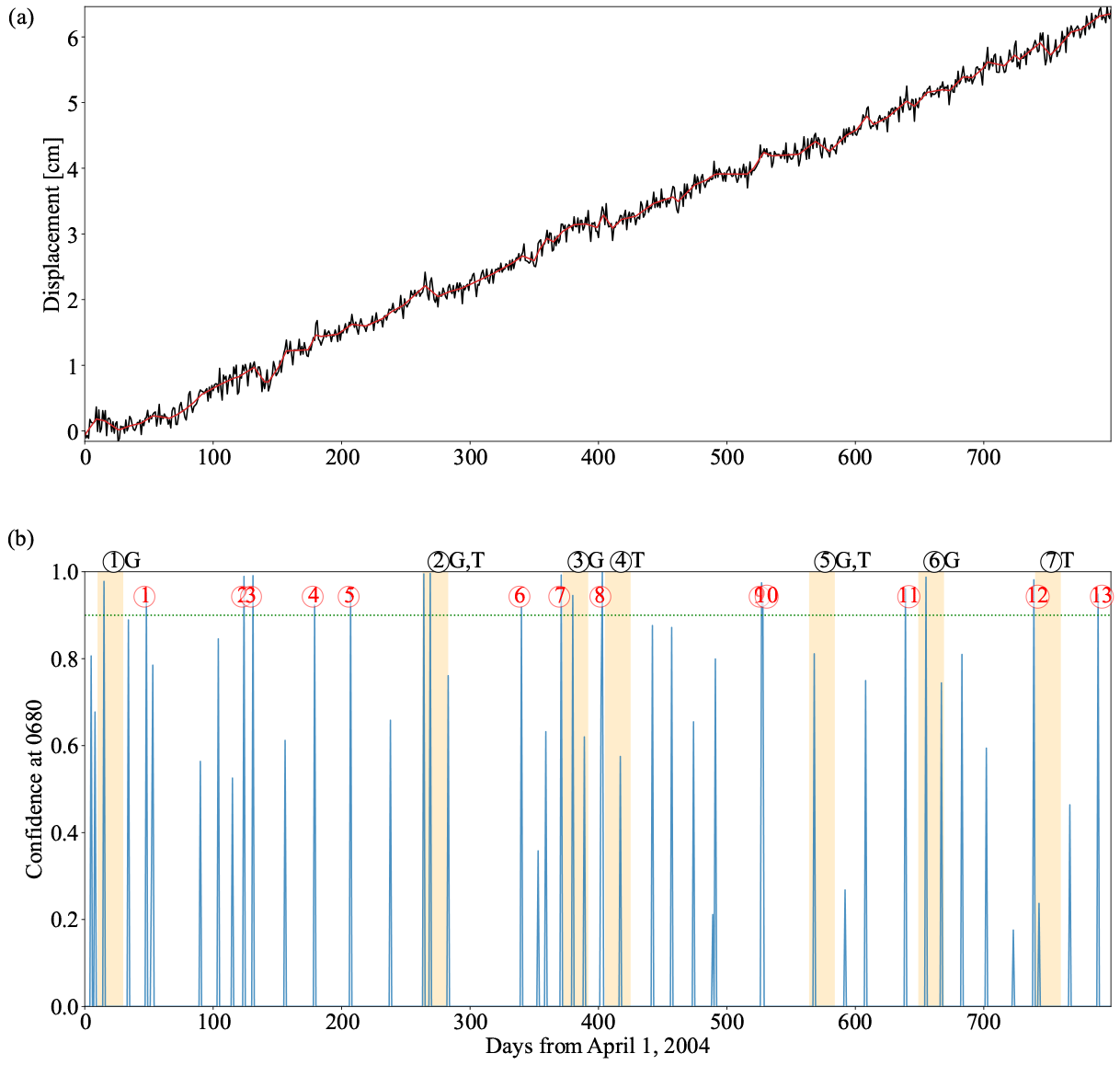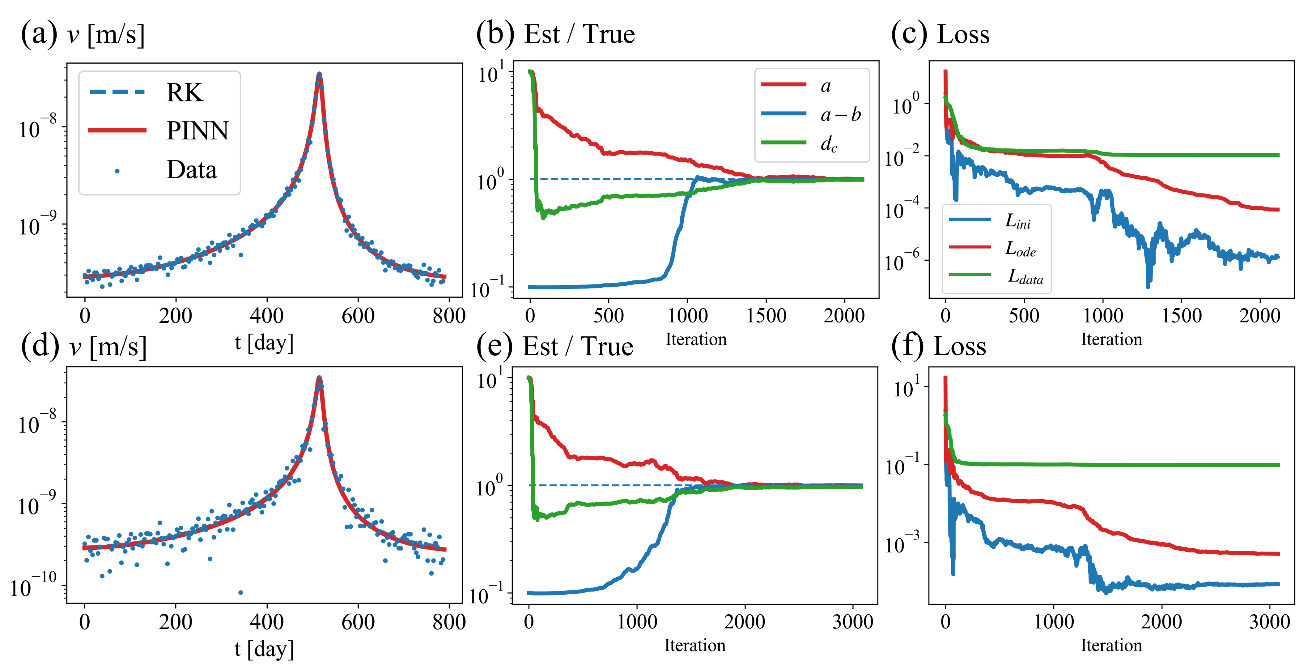NOTICE
List
1. Automated detection of slow slip events by l1 trend filtering
Description : Slow-slip events, characterized by slower fault rupture compared to ordinary earthquakes, have been discovered in tectonic zones worldwide. The discovery of slow-slip events is essential to understanding the behavior of the fault-slip phenomena in the vicinity, including megathrust zones where large earthquakes occur. Short-term slow-slip events with a duration of a few days rarely result in sufficient displacement to be detected visually, so a refined automated detection method is required. In this project, we developed an automatic detection method for short-term slow-slip events using the Global Navigation Satellite System (GNSS) array. The developed method combines a sparse estimation technique called l1 trend filtering with a p-value integration method to provide not only candidate points in time for events, but also confidence in detection. For more information, please see the paper below and obtain the program from the link below.
Details : Keisuke Yano and Masayuki Kano (2022) l1 Trend Filtering-based Detection of Short-term Slow Slip Events: Application to a GNSS Array in Southwest Japan, accepted at Journal of Geophysical Research: Solid Earth
Program : https://github.com/star-e-tohoku/ssedetection
Example of filtering and event detection

2. Physics-Informed Neural Networks for Fault Slip Monitoring: Simulation, Frictional Parameter Estimation, and Prediction on Slow Slip Events in a Spring-Slider System
Description : Slow slip events (SSEs), which are fault slips characterized by slower velocity and longer duration compared to earthquakes, have been observed in many subduction zones. Monitoring SSEs is important for understanding large earthquakes because they occur adjacent to areas where significant earthquakes could potentially occur. Different types of fault slips, including SSEs and earthquakes, can be explained by distinct frictional properties on the fault. These frictional properties can be estimated from physical laws of fault slip and observed crustal deformation. In this project, we propose a new machine-learning based approach for fault slip monitoring. We employed Physics-Informed Neural Networks (PINNs), which simultaneously learn the physical laws and data, to simulate fault slip, estimate the frictional parameters, and predict subsequent fault slip. As a first step, we utilized a single-degree-of-freedom spring-slider system, which is the simplest physical model to simulate SSEs. We successfully simulated SSEs, estimated frictional properties from synthetic observation data, and discussed the potential for fault slip prediction. Our results suggest the significant potential of PINNs for fault slip monitoring. For more information, please see the paper below and obtain the program from the link below.
Details : Fukushima, R., Kano, M., & Hirahara, K. (2023). Physics-informed neural networks for fault slip monitoring: Simulation, frictional parameter estimation, and prediction on slow slip events in a spring-slider system. Journal of Geophysical Research: Solid Earth, 128, e2023JB027384. https://doi.org/10.1029/2023JB027384
Program : https://doi.org/10.5281/zenodo.8405977
Example of the frictional parameter estimation by Physics-Informed Neural Networks (figure from Fukushima et al. 2023)








